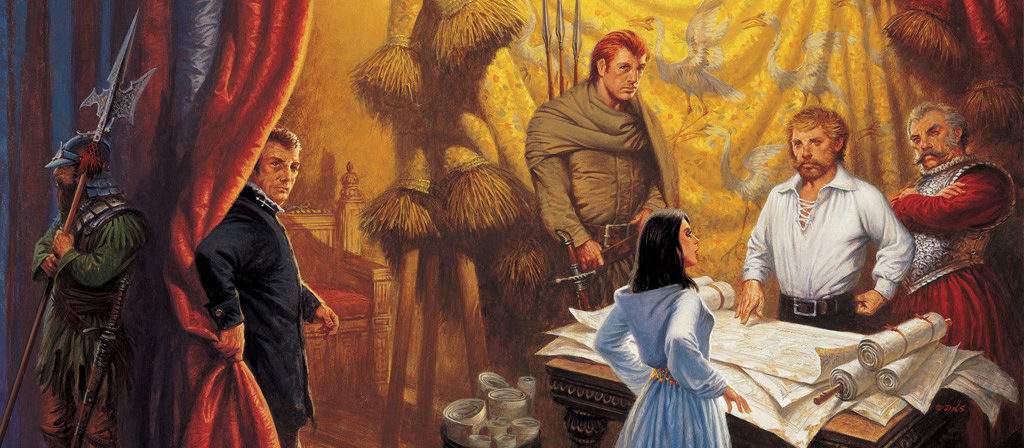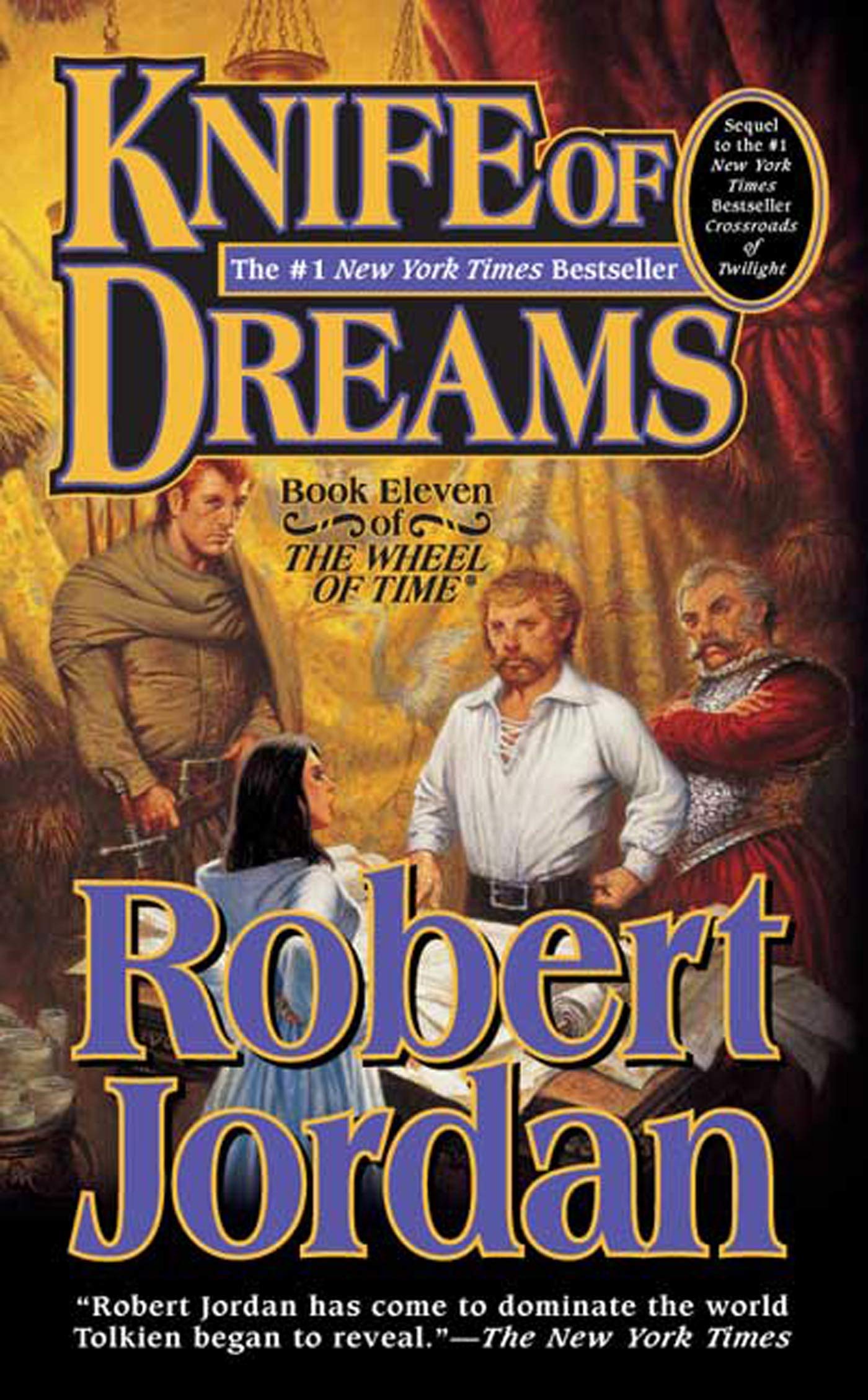

“A beautiful battle is one you don’t have to fight.”
Knife of Dreams, the last book that Robert Jordan wrote before his untimely death from heart disease, is something of a return to form after a half dozen or so books that shone a bright spotlight on the author’s worst tendencies. Not that I ever found that previous form to be anything to write home about, mind you. But—no matter how bloated and poorly written, those first few books in the Wheel of Time series were at least telling a story I was interested in reading. The middle books, by contrast, have scant few crucial plot developments spread stingily among their ancillary side stories. Each is marked by a lack of structure and excessive padding, which made trundling through them a thankless chore. Consequently, Knife of Dreams distinguishes itself from the pack simply by virtue of its commitment to advancing the story.
Indeed, the approach to Knife of Dreams seems entirely distinct from what came before. There’s a shift away from peripheral characters and minutiae as all three of its primary male heroes are given substantial things to do. Rand forges a truce with his alter ego and loses his left hand in a skirmish. Mat finally marries the Daughter of the Nine Moons. After something like three thousand pages, Perrin finally rescues Faile from the Shaido. All three of them are involved in large scale battles. The other characters (Lan, Nynaeve, Egwene, Elayne, Loial, &c), though tasked with much less, are given appropriate space for their stories as befits the main narrative.
In the early Wheel of Time books, Jordan wrote each new entry in such a way that readers might believe that the story was coming to its ultimate climax as they neared the book’s end. Somewhere around The Shadow Rising, he dropped the charade, and thereafter each volume grew increasingly distended as the story sprawled out in a bunch of random directions and dozens of inconsequential characters were introduced to the reader and given detailed histories. Individual books didn’t need rising and falling action because readers knew the story would continue. In Knife of Dreams, for the first time since that formal shift, the scope is narrowed. The reader finally feels like Tarmon Gai’don (the Last Battle) is actually impending. Whether this new approach came about because Jordan finally accepted criticism or because he felt pressure to complete the series before his health failed him, it’s a welcome change.
I’d guess it was the latter case, because, while the pacing is now acceptable, much of what plagues Jordan’s writing otherwise is still present. All the braid-tugging, adult spanking, looks that could kill, smiles that don’t reach the eyes, verbose descriptions of clothing, childish romances, third-rate melodramatics—all that stuff is still pervasive and burdensome. And even with the greater sense of urgency achieved by whittling down the extraneous subplots and offering mercifully abbreviated resolutions to others, it’s not as if he’s writing with any sort of panache. He’s conveying the story much better, for sure, but he’s nowhere close to evoking a sense of wonder the way the best fantasy does (as he perhaps did in earlier novels).